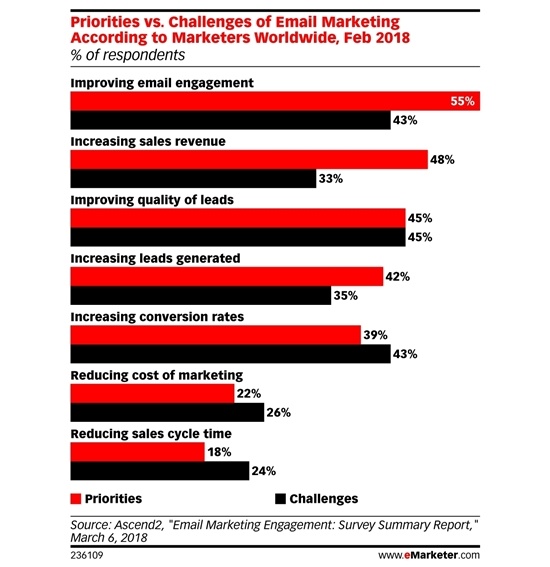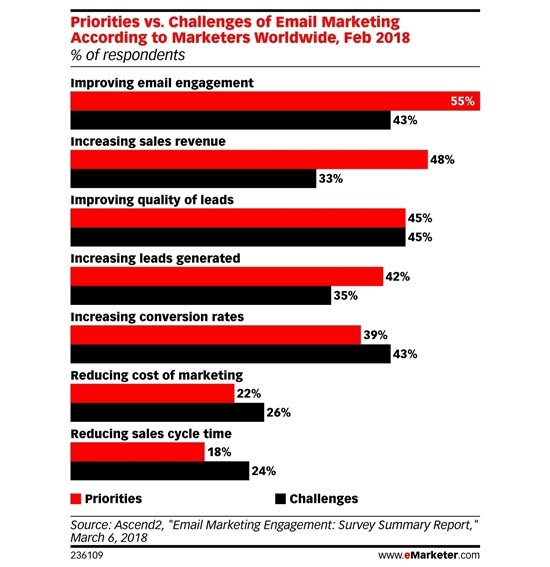The problem is that many of those assumptions are myths, and they can have a serious impact on an email campaign's success in a variety of ways—from simply poor deliverability to more serious problems, such as blacklisting. Myth 1: Activity targeting is the answer to every deliverability problem The concept of Activity targeting is simple: If you email only to people who open your emails, your deliverability will improve because you won't be bothering people who are likely to delete without opening or complaining the message is spam. When you think about it, that makes sense: Your personal Gmail address is likely a little looser with its spam filtering because you interact with marketing email; but, if your work email is used primarily for business communications, an email with a sales-oriented message, solicited or not, might raise a red flag for your ESP, simply because it's not the normal message it sees. And that is why it is critically important to monitor your deliverability; you cannot assume non-spam email will be placed in the inbox properly. Myth 3: Deliverability tools and services are necessary only for senders with reputation issues Do you go to the doctor only when you're sick? Would a brand with a reputation issue even have that issue if it had been actively monitoring deliverability and using best-practices? Myth 5: The more IPs, the better The idea here is that the more IP addresses you use, less risk of an overall negative impact in the event something happens to your main IP, like a blacklisting. But the IP address itself has less of an impact on your email performance than your actual email practices. Let's say you have more IPs than you need (you should be determining that need based on send volume, your reputation, and so on), but you do some shady things in your email program, like using purchased lists with dubious recipient consent. The important thing to remember: don't be a bad sender, because whether you use 100 IPs or just one, your behavior is what affects your deliverability.
Increasing email engagement is marketers’ top priority and challenge, according to research (see chart, below).
Many marketers believe the path to better email engagement is paved with witty subject lines and colorful design. However, no amount of clever wordsmithing or quick fixes to appearance will mend that fundamental block to engagement: poor deliverability.
Marketers have a lot on their plate, and email certainly isn’t the only tool in their toolbox, so it makes sense they would lean on some assumptions about email best-practices.

The problem is that many of those assumptions are myths, and they can have a serious impact on an email campaign’s success in a variety of ways—from simply poor deliverability to more serious problems, such as blacklisting.
And when that happens, it’s not a pretty sight…
So here’s a list of five of the most dubious myths marketers need to unsubscribe from to increase email deliverability and obtain better email results.
Myth 1: Activity targeting is the answer to every deliverability problem
The concept of Activity targeting is simple: If you email only to people who open your emails, your deliverability will improve because you won’t be bothering people who are likely to delete without opening or complaining the message is spam.
The thought is, you’ll improve your bounce rates and complaint rates while demonstrating higher engagement rates. With positive feedback like that, you shouldn’t have any deliverability problems, right? Not exactly.
Activity targeting is not a magic bullet. (And, truly, nothing is: You can’t rely solely on blanket policies. Instead, implement practices that make sense to you and focus on personalization.) Activity targeting is a great first step in getting your email programs to a gold standard.
Of course, you should email only those people who want your emails, but you’ll need to take it a few steps further to solve all your deliverability problems. Which is why it makes sense work with deliverability experts who can identify issues, correct them, and monitor for any unsavory activity.
Marketers can resort to every trick in their playbook, such as emailing only engaged recipients, but they still wouldn’t be solving or protecting against every problem.
Myth 2: Deliverability matters only in the B2C world
On the surface, it would seem deliverability is important only to businesses that send emails directly to customers to sell products or services.
Those consumers are savvy; they generally know what is and is not spam (generally), and so do the filters used by their email providers. What is often overlooked is that personal email addresses and their…

COMMENTS